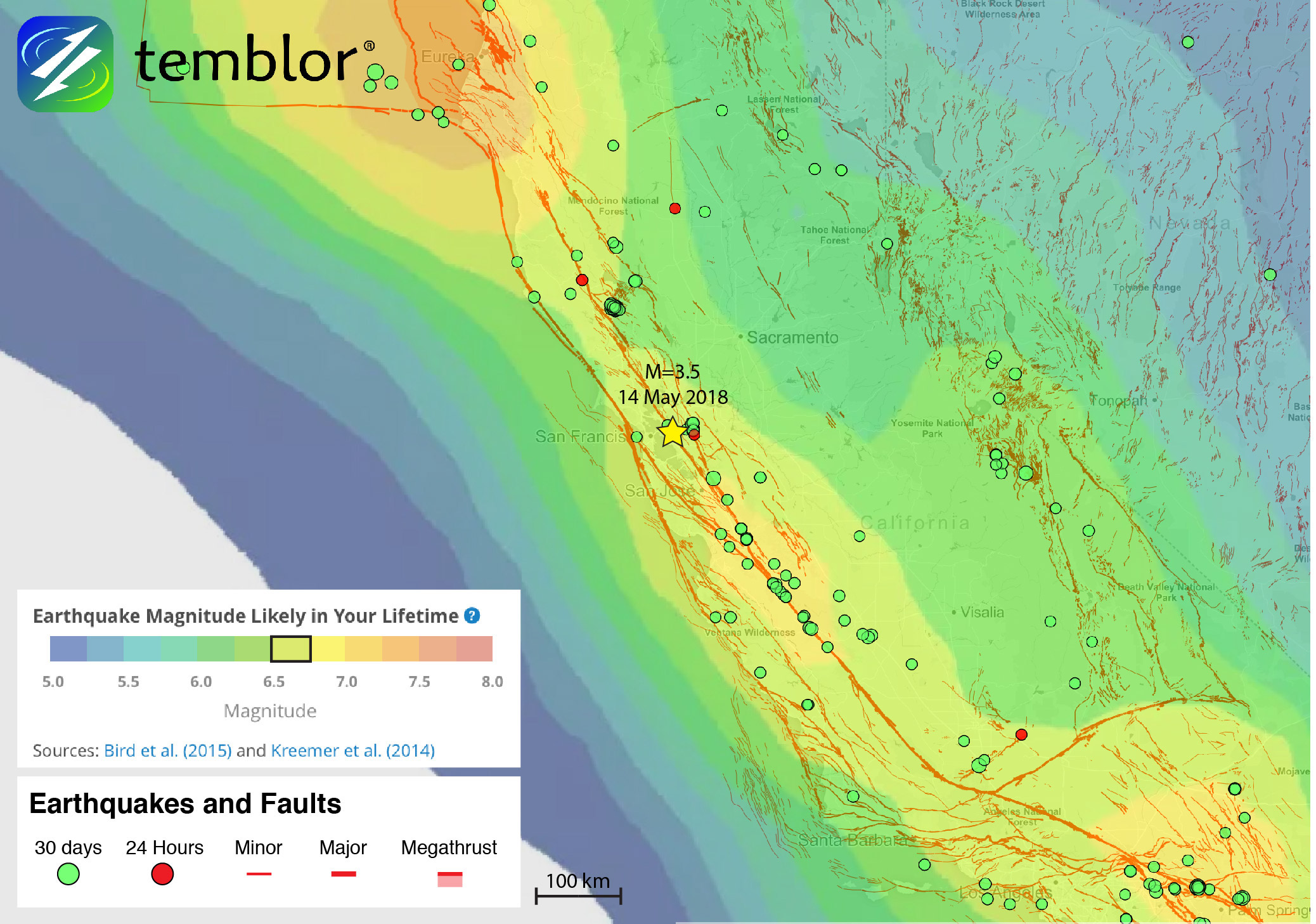By David Jacobson, Temblor
Click here to protect yourself from natural disasters

Last night, at 7:18 p.m. local time, a M=3.5 earthquake struck just 3 km east of downtown Oakland, and resulted in shaking across the entire San Francisco Bay Area. As of this morning, over 19,000 people reported feeling the quake on the USGS website. According to the USGS ShakeMap, only light shaking was felt close to the epicenter. Because of this, no damage or injuries were sustained. The quake wasn’t even large enough to disrupt the San Francisco Giants baseball game, as Giants pitcher Chris Stratton still delivered a pitch in the first inning.

Based on the location of last night’s earthquake, it struck along the Hayward Fault. The Hayward Fault is one of the three major Bay Area faults (in addition to the San Andreas and Calaveras faults) and snakes its way from San Pablo Bay to just north of San Jose. In the process, it cuts through the cities of Berkeley, Oakland, Hayward, and Fremont. Because of this, it threatens over 7 million people and 2 million buildings.

While last night’s quake was nothing to be concerned about, the Hayward Fault is capable of rupturing in large earthquakes. In fact, the USGS gives it the highest probability of any Bay Area fault of rupturing in a large (M=6.7+) earthquake by 2043 (33%). Because of the significant threat the fault poses to the region, last month, the USGS released the second volume of their HayWired report, the impacts of a large Hayward Fault earthquake on the Bay Area. Perhaps just by coincidence, but the epicenter of last night’s quake was just a couple kilometers from the epicenter of the scenario earthquake in HayWired. To read more about that scenario, click here .
While a M=7.0 earthquake along the Hayward Fault, which is what the HayWired scenario simulates, may seem large, Bay Area residents should still be prepared for a large earthquake in their lifetime. By using the Global Earthquake Activity Rate (GEAR) model, which is available in Temblor, we can see what people can expect. This model uses global strain rates and the last 40 years of seismicity to forecast the likely earthquake magnitude in your lifetime anywhere on earth. In the figure below, one can see that in the location of last night’s earthquake, the likely magnitude is M=6.5+. While this is smaller than the HayWired scenario, such an earthquake would still cause significant damage to the region and recovery could take months to years. Therefore, people should be aware of the hazards around them and do everything they can to prevent future losses.

References
USGS
Detweiler, S.T., and Wein, A.M., eds., 2017, The HayWired earthquake scenario—Earthquake hazards (ver. 1.1, March 2018): U.S. Geological Survey Scientific Investigations Report 2017–5013–A–H, 126 p., https://doi.org/10.3133/sir20175013v1. Link
Detweiler, S.T., and Wein, A.M., eds., 2018, The HayWired earthquake scenario—Engineering implications: U.S. Geological Survey Scientific Investigations Report 2017–5013–I–Q, 429 p., https://doi.org/10.3133/sir20175013v2. Link
- Magnitude 7 Yukon-Alaska earthquake strikes on the recently discovered Connector Fault - December 8, 2025
- Upgrading Tsunami Warning Systems for Faster and More Accurate Alerts - September 26, 2025
- April 2025 magnitude 6.2 earthquake near Istanbul highlights strengths and weaknesses in seismic mitigation - September 14, 2025
